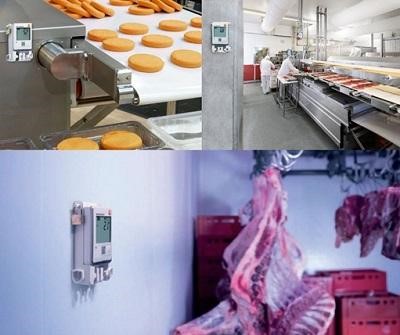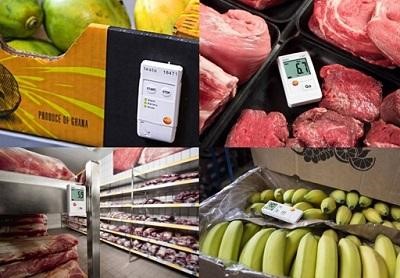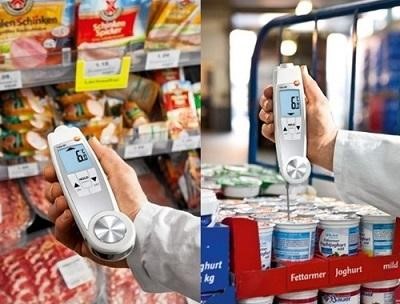Test instruments for food Inspection
2022-12-08
How to perform food monitoring with Test equipment? What are critical control points?
Customers and consumers presuppose the quality and safety of food. This represents a great challenge for the people involved who have to comply with various limit values and standards, as well as simultaneously design their operational processes in a cost-effective way. In this sense the HACCP assumes a special meaning. But what is HACCP? The abbreviation HACCP, in English, stands for Hazard Analysis and Critical Control Points, that is, Hazard Analysis and Critical Control Points. The HACCP concept is a complement to basic hygienic measures and aims to reduce foodborne illnesses. This concept is based on the Codex Alimentarius and gives a central role to self-control.

The HACCP concept covers these 7 points:
- Relevant Hazard Analysis (Hazard Analysis)
- Identification of Critical Control Points (Critical Control Points)
- Set limit values (only for critical control points)
- Establishment and implementation of effective control
- Establishment of corrective measures
- Preparation of documents and records (documentation)
- Establishment of a regular verification process (obligation of own control)
What are critical control points?

Critical control points (CCPs) are points with a high probability that risks related to the health of customers will occur if they are not taken into account. These are, for example, heating steps, sufficient cooling, control of foreign bodies.
The strategic use of measuring technology helps you to ensure excellent food quality considering HACCP specifications. In this way, for example, automated monitoring of the air conditioning reduces manual effort and increases safety thanks to versatile alarm functions. A combined thermometer is revealed to be a real time-saving miracle at the entrance of goods.
The measurement of random samples with portable measuring instruments plays a very important role especially in the receipt of goods and in the preparation of meals.
If you are looking for a portable analyzer for the extraction of random samples it is recommended that you observe the following criteria:
- Can it penetrate the goods or does the measurement have to be carried out non-destructively? The penetration measurement determines the interior temperature and is much more accurate, however, the packaging is damaged.
- Do you travel a lot with the thermometer in your pocket? Then a folding thermometer ensures that they do not have injuries due to the measuring tip.
- Do you measure foods with different consistencies (e.g. poultry, meat, cheese, liquids)? In this case a thermometer with various probes is suitable for you.
Penetration thermometers are indispensable for measuring the exact interior temperatures of food.
Indoor temperature measurement is not only important in the receipt of goods. In the HACCP concept, sufficient heating of meals is also a critical control point in the preparation process that has to be continuously checked and documented.
The penetration probe is fixedly mounted to the instrument or can also be connected externally for interchangeable measurement tasks. This makes it possible to perform measurements without problems even on frozen food.
Non-contact and non-destructive measurement with IR and combination thermometers

Non-contact infrared measurement is often used at the entrance of goods, as it provides quick results without damaging the product or packaging.
However, it should be borne in mind: With an infrared thermometer only the surface temperature is measured. Penetration measurements are usually required in order to record the indoor temperature.
For this reason, the use of a combined instrument such as the testo 104-IR is especially practical and time-saving since both measurement methods, accurate penetration measurement and fast IR measurement are available in a single instrument. In addition, it is easy to use and can be perfectly and safely stored in any pocket.
Measuring oil quality according to the semaphore principle with the frying oil meter
The quality of the frying oil in the deep fryer includes directly on many factors: Whether it has been used affects the taste and digestibility of fried food. On the contrary, a premature change of the frying oil causes high costs. How is it possible to guarantee the quality of frying oil by saving oil at the same time?
The testo 270 frying oil meter offers the most convenient solution for monitoring the consumption of frying oil. The operation is very simple: the sensor of the testo 270 is immersed in the oil and in a few seconds measures the proportion of the so-called “total polar component content” (TPM) in the oil. If the oil is too old, it has a higher TPM value.
Continuous temperature measurement with data loggers

Data loggers are used wherever measured values are frequently recorded or recordings are made over an extended period of time. In refrigerating chambers and warehouses, data loggers ensure compliance with prescribed temperatures. Depending on the model, they store up to one million measured values that can be read via the PC. The decisive factors for use in the food sector is robust processing with protection against splashing water so that the recorders do not have to be disassembled before cleaning the enclosure.
The use of an automated data monitoring system is even more convenient. This one is especially worthwhile if several enclosures or cooling units have to be monitored and guarantees a fundamental added value for security thanks to its alarm function.
Data loggers that monitor environmental conditions in refrigerating chambers and warehouses are often installed fixedly. Generally, registrars stay at their place of application for a period of time of one to two years. In addition to a robust housing that withstands water jet cleaning, it is also important that the batteries have a long service life and that the memory for the measured values is large. Depending on your needs, you can choose between compact and premium data loggers.
At all times more security for your food
With the testo Saveris 2 WiFi data logging system, temperatures in the warehouse, at merchandise counters and refrigeration units are automatically monitored and you are warned by an alarm if there are problems.
- Data transmission via WiFi
- All measurement data available always, anywhere and on any device
- Alarms in case of exceeding the limit values
- With the testo Saveris 2 App for simpler configuration, Push alarms and WiFi range analysis
- Free online memory (Testo cloud)
How does the system work? One or more WiFi data loggers automatically calculate the measurement data and transfer it via WiFi to the Testo cloud. Not only are the data stored securely there, but they are also documented making cumbersome manual reading unnecessary. In addition, environmental conditions are not only recorded as with data loggers, but also monitored. Through access to the cloud you will always have the measured values in view on your smartphone, tablet or PC and you will get alarm notifications when critical values are reached. Always and anywhere.




